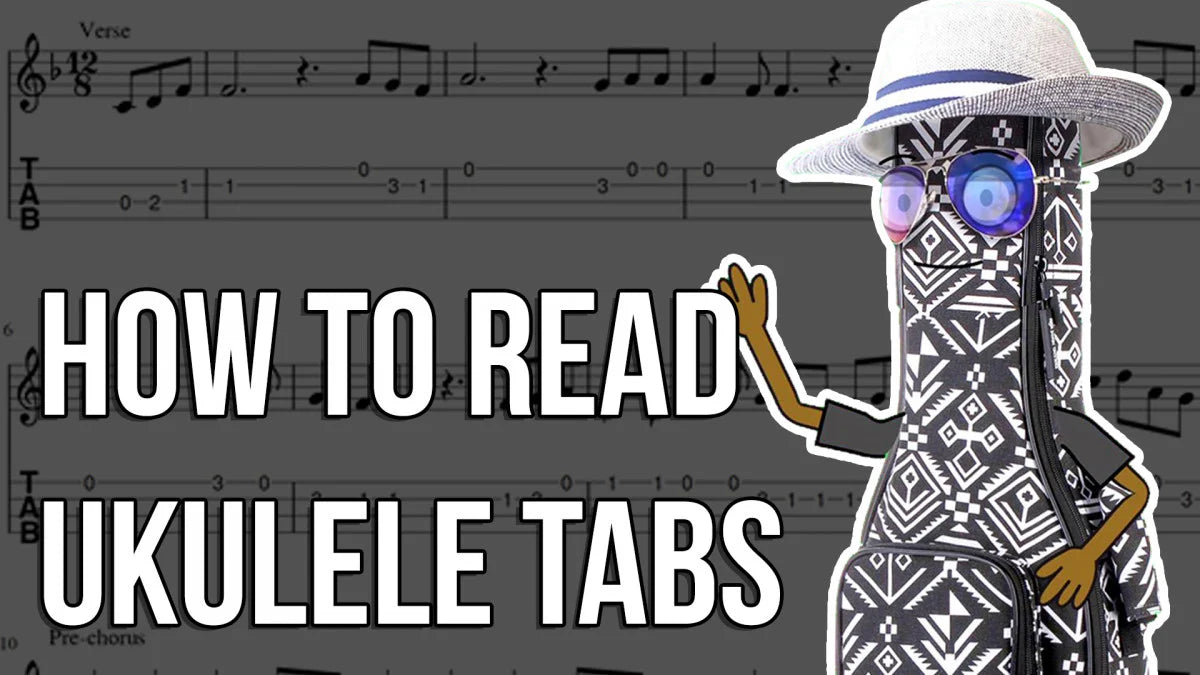How to read ukulele tabs? Here's how to easily read them!

How to read ukulele tabs? When you’re learning how to play the ukulele, you might have encountered tablature along the way. This can be very confusing to the beginner musician, especially if you only know how to play chords. But don’t worry! In this article, we’ll explain what ukulele tabs are and how you can play ukulele tabs. They’re actually pretty easy, and when you get the hang of it, you’re on your way to becoming an expert ukulele player!
What Are Ukulele Tabs?
Ukulele tabs are another notational form often used for fretted instruments. They're similar in some ways to guitar tabs, but they differ slightly because of their unique fretboard layout. The first thing you need to understand about them is that there's no standard notation system. Instead, each song has its own set of rules which determine exactly where notes should go.
There's really no need to learn ukulele tabs when playing the ukulele, you can play a variety of songs just with simple chords. However, learning how to read and play ukulele tabs allows you to play more complicated songs. So even if you prefer playing the ukulele using chords, knowing how to read tablature will help you become an expert player of this instrument.
Step-by-Step Instructions on How to Read Ukulele Tabs
When learning how to read ukulele tabs, let’s first look at what’s in a ukulele tab. As you read a ukulele tab, you will see four lines. These four lines correspond to the different strings on the ukulele. If you hold your ukulele with the neck on your left hand, then the highest line will correspond to the string nearest to you: the high g string. This means that the lowest line corresponds to the string that’s farthest from you.
1. Determine the corresponding frets.
The first step to reading ukulele tabs is to determine the corresponding frets. You can tell what fret is played by looking at the number. The number you see on the tablature determines what fret you should press down. For example, if you see a number two on the highest line, this means that you should press down on the high g string on the second fret.
2. Play from left to right.
Just like how we read books and words, you play ukulele tabs from left to right. So all you have to do is follow the numbers and the lines to know what you should be playing. However, most ukulele tabs won’t give you the beat or rhythm of the song. If you encounter this, then it’s best to listen to the song or even play your ukulele with the song to know whether you’re playing the correct rhythm.
3. Play vertically stacked numbers simultaneously.
If you see numbers that are vertically stacked, this means you should press down on the corresponding strings and frets at the same time. In some cases, vertically stacked numbers are actual chords, but other times, they’re used to create more depth in the music.
4. Practice!
Lastly, practice! Practice makes perfect so make sure to keep practicing until you get familiarized with ukulele tabs. Once you feel comfortable enough, try to memorize different tabs as much as possible. This will help you when you need to learn new songs quickly without having to look up the tab every single time.
Special Symbols on Ukulele Tabs
Ukulele tabs don’t just consist of lines and numbers. In some cases, you may encounter certain symbols that indicate special ways of playing the tabs. Here are some common special symbols and what they mean:
-
Hammer-ons (h): A hammer-on is when you play a string and immediately press on a higher fret to transition from a lower note to a higher note.
-
Pull-offs (p): A pull-off is the opposite of a hammer-on. Instead of placing your finger on a higher fret, you place them on a lower fret to create a lower note. Hammer-ons and pull-offs can also be designated using the ^ symbol.
-
Slides (/ or \): Slides mean that you move from the first to the second note using the slide technique, a movement of the arm and wrist up or down the neck.
-
Vibrato (~): Vibratos allow you to be more expressive when playing the ukulele. When you see this symbol, you can either move your finger horizontally or vertically when playing a certain note.
Learn the Ukulele With Bondi Ukuleles
If you're ready to play chords and tabs on the ukulele, then it's time to choose your ukulele here at Bondi Ukuleles. We have a great selection of ukes for both beginners and advanced players, and our team is always here to answer any questions you have about our products. Don’t hesitate to reach out to us today to know more!
 Lifetime Warranty
Lifetime Warranty  60 Day Return Policy
60 Day Return Policy 1-4 Day Delivery
1-4 Day Delivery






























Leave a comment